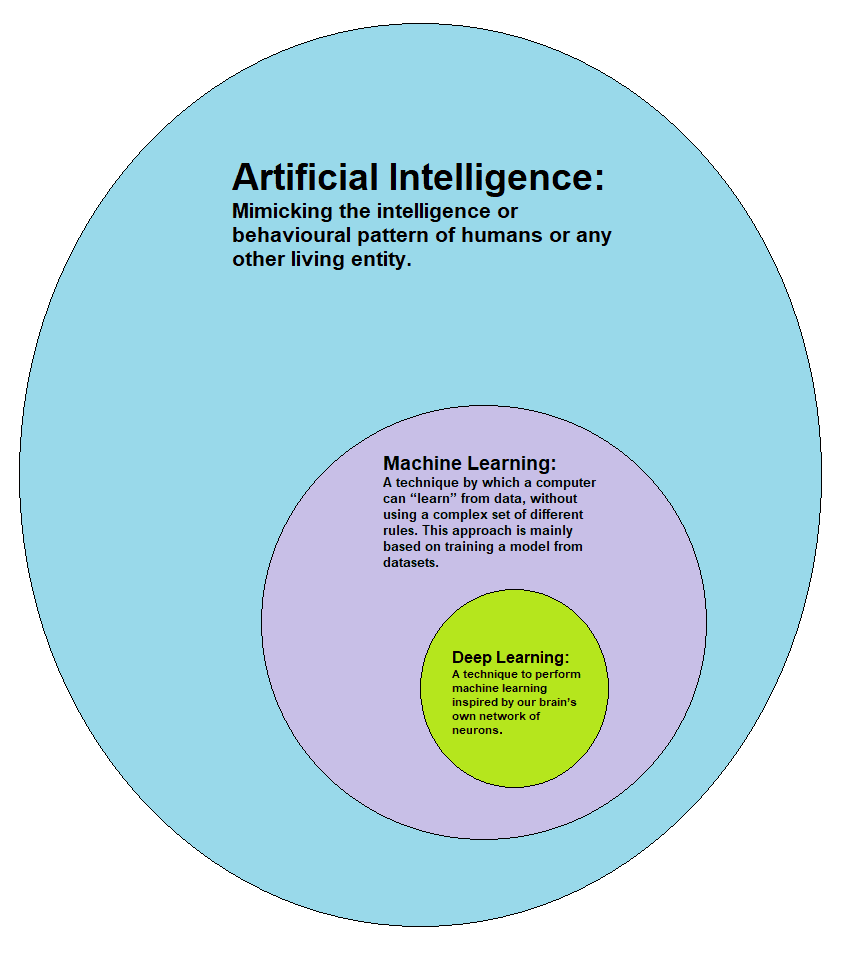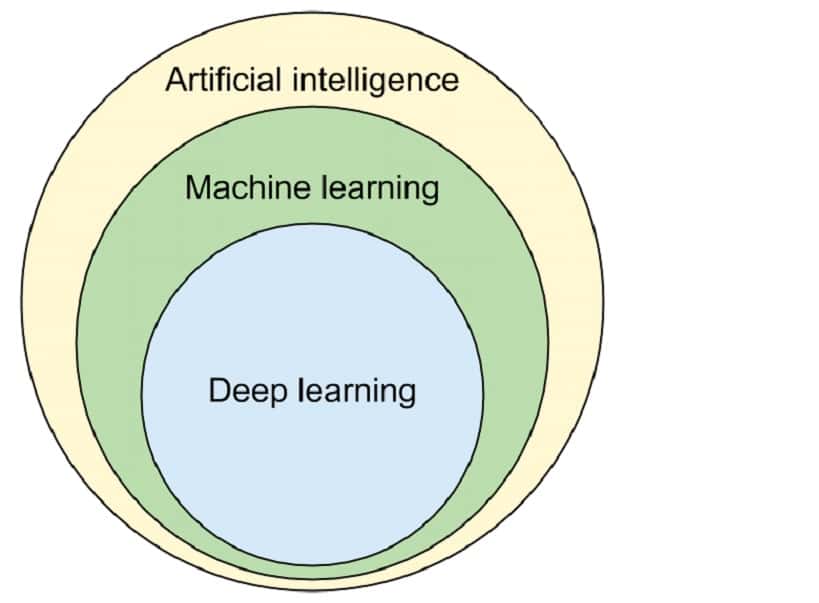Did Deep Blue, the famous chess-playing computer, utilize machine learning to defeat world champion Garry Kasparov in 1997?
The Creation of Deep Blue
How It All Began
As a chess enthusiast, I’ve always been fascinated by the idea of creating a machine that could beat the best human players. The story of Deep Blue’s creation is one that has always intrigued me. It all began in 1985 when computer scientist Feng-hsiung Hsu started working on a chess-playing program called ChipTest. He later teamed up with IBM to create a more advanced version, which would become Deep Blue.
The Challenges Faced
The team faced numerous challenges in developing Deep Blue, including designing hardware that could process millions of moves per second and creating algorithms that could analyze and evaluate positions accurately. They also had to figure out how to make the machine learn from its mistakes and improve its gameplay over time.
The Final Product
After years of development and testing, Deep Blue was finally ready to take on the world’s best chess player, Garry Kasparov, in 1997. The match was highly anticipated and watched by millions around the globe. In the end, Deep Blue emerged victorious, winning two games out of six and drawing three others.
The Purpose of Deep Blue: A Chess-Playing Computer
Why Create a Chess-Playing Computer?
Chess has long been considered one of the most complex games ever created. It requires strategic thinking, foresight, and an ability to analyze multiple possibilities at once. Creating a machine that could play chess at a high level was seen as an important milestone in artificial intelligence research.
What Did Deep Blue Achieve?
Deep Blue’s victory over Kasparov was seen as a major breakthrough for AI research. It demonstrated that machines were capable of beating humans at tasks previously thought to be exclusive to our species. It also sparked a renewed interest in machine learning and the potential applications of AI in various industries.
What’s Next for Chess-Playing Computers?
Since Deep Blue’s victory, there have been numerous advancements in chess-playing computers. Today, machines like AlphaZero and Leela Chess Zero are capable of beating even the strongest human players. The next challenge is to create machines that can play other games, such as Go or poker, at a high level.
Who Created Deep Blue? Meet the Team Behind the Machine
The Key Players
The team behind Deep Blue was made up of some of the brightest minds in computer science and AI research. It included:
– Feng-hsiung Hsu: The lead designer of Deep Blue
– Murray Campbell: A senior member of the team who helped design the algorithms used by the machine
– Joe Hoane: Another key member who worked on developing Deep Blue’s software
Their Contributions
Each member of the team played a crucial role in creating Deep Blue. Hsu was responsible for designing the hardware and overseeing the project, while Campbell developed many of the algorithms used by the machine. Hoane worked on improving Deep Blue’s gameplay over time.
Their Legacy
The team’s work on Deep Blue has had a lasting impact on AI research. It demonstrated that machines could be designed to learn from their mistakes and improve their performance over time. Their work paved the way for future advancements in machine learning and game-playing computers.
How Deep Blue Revolutionized Chess-Playing Computers
The Importance of Deep Blue’s Victory
Deep Blue’s victory over Kasparov was seen as a major breakthrough for AI research. It demonstrated that machines were capable of beating humans at tasks previously thought to be exclusive to our species. It also sparked a renewed interest in machine learning and the potential applications of AI in various industries.
The Legacy of Deep Blue
Deep Blue’s legacy can be seen in the numerous chess-playing computers that have been developed since its victory. These machines have become increasingly sophisticated, using advanced algorithms and hardware to analyze positions and make strategic decisions. They have also paved the way for advancements in other areas of AI research, such as natural language processing and image recognition.
What We Can Learn from Deep Blue
Deep Blue’s success was due in part to its ability to learn from its mistakes and improve over time. This approach to machine learning has become increasingly popular in recent years, with many researchers focusing on developing algorithms that can adapt and improve their performance over time. Deep Blue’s legacy reminds us of the importance of continued innovation and experimentation in AI research.
Technical Specifications: Inside the Hardware and Software of Deep Blue
The Hardware
Deep Blue was designed with a custom-built supercomputer that could process millions of moves per second. It consisted of:
– 32 processors
– 256 megabytes of RAM
– Custom-designed VLSI chips
The Chess-Specific Hardware
In addition to the general-purpose hardware, Deep Blue also had specialized hardware designed specifically for playing chess. This included:
– Bit-slice processors optimized for chess calculations
– Specialized memory systems for storing game data
– Custom-designed error-correcting code (ECC) circuits
The Software
Deep Blue’s software was divided into two main components: search and evaluation. The search component used an algorithm called alpha-beta pruning to explore possible moves and evaluate their potential outcomes. The evaluation component used a combination of heuristics and brute-force calculations to assess the relative strength of each player’s position.
The Importance of Software
While Deep Blue’s hardware was impressive, its software was just as important in determining its success. The algorithms used by the machine were designed to analyze positions and make strategic decisions based on a variety of factors, including material balance, pawn structure, and king safety.
Did Artificial Intelligence Power Deep Blue’s Chess-Playing Abilities?
The Role of AI in Deep Blue
Deep Blue was designed using a combination of traditional programming methods and machine learning techniques. While the machine did not use true artificial intelligence in the sense that we understand it today, it did employ a form of machine learning called reinforcement learning.
Reinforcement Learning
Reinforcement learning is a type of machine learning where an agent learns to behave in an environment by performing actions and receiving rewards or punishments. In the case of Deep Blue, the machine learned from its mistakes and improved its gameplay over time based on feedback from previous games.
The Limitations of AI in Deep Blue
While Deep Blue’s use of reinforcement learning was innovative at the time, it had some limitations. For example, the machine could only learn from past games that it had played. It could not learn from other sources such as books or human instruction.
The Importance of Human Input
Despite these limitations, human input was still crucial to Deep Blue’s success. The team behind the machine spent countless hours analyzing games and developing new strategies for the machine to use. This combination of human expertise and machine learning allowed Deep Blue to become one of the most formidable chess-playing machines ever created.
Machine Learning vs Traditional Programming Methods: What’s the Difference?
Traditional Programming Methods
Traditional programming methods involve writing code that tells a computer exactly what to do in a given situation. This code is typically based on a set of rules or algorithms that have been designed by a human programmer.
The Advantages of Traditional Programming
Traditional programming methods are highly precise and deterministic. They allow programmers to create software that behaves exactly as intended, with no room for error or ambiguity.
Machine Learning
Machine learning involves creating algorithms that can learn from data and improve their performance over time. These algorithms are designed to identify patterns in large datasets and use this information to make predictions or decisions.
The Advantages of Machine Learning
Machine learning allows computers to learn from experience and adapt to new situations in ways that traditional programming cannot. It also allows machines to process large amounts of data quickly and accurately, making it ideal for tasks such as image recognition and natural language processing.
The Role of Machine Learning in Developing Deep Blue’s Chess-Playing Skills
How Reinforcement Learning Was Used
Deep Blue used a form of machine learning called reinforcement learning to improve its gameplay over time. The machine learned from its mistakes and adjusted its strategy accordingly based on feedback from previous games.
The Importance of Feedback
Feedback was crucial to Deep Blue’s success. The machine relied on feedback from previous games to identify areas where it could improve and adjust its strategy accordingly. This allowed the machine to learn from experience and become increasingly sophisticated over time.
Other Machine Learning Techniques Used in Deep Blue
In addition to reinforcement learning, Deep Blue also used other machine learning techniques such as decision trees and neural networks. These techniques were used to analyze positions, evaluate potential moves, and make strategic decisions based on a variety of factors.
The Importance of Combining Techniques
By combining multiple machine learning techniques, the team behind Deep Blue was able to create a machine that was highly sophisticated and capable of playing chess at a high level. This combination of techniques allowed the machine to analyze positions and make strategic decisions based on a variety of factors, including material balance, pawn structure, and king safety.
How Machine Learning Improved Computer Chess-Playing Capabilities
The Advantages of Machine Learning in Chess
Machine learning has had a profound impact on computer chess-playing capabilities. It has allowed machines to process large amounts of data quickly and accurately, making it possible for them to analyze positions and make strategic decisions in real-time.
The Importance of Adaptability
One of the key advantages of machine learning in chess is its ability to adapt to new situations. Machines can learn from experience and adjust their strategy accordingly based on feedback from previous games. This allows them to improve their gameplay over time and become increasingly sophisticated.
The Future of Machine Learning in Chess
The future of machine learning in chess is bright. Researchers are continuing to develop new algorithms and techniques that will allow machines to play even more sophisticated games. They are also exploring new applications for machine learning in other areas such as natural language processing and image recognition.
The Potential Applications Beyond Chess
The potential applications for machine learning extend far beyond the world of chess. Machines are already being used in fields such as healthcare, finance, and transportation to process large amounts of data and make informed decisions. As machine learning continues to evolve, we can expect it to have an even greater impact on our lives in the years ahead.
Limitations to Machine Learning in Deep Blue’s Development
The Limitations of Reinforcement Learning
While reinforcement learning was innovative at the time, it had some limitations. For example, Deep Blue could only learn from past games that it had played. It could not learn from other sources such as books or human instruction.
The Importance of Human Expertise
Despite these limitations, human expertise was still crucial to Deep Blue’s success. The team behind the machine spent countless hours analyzing games and developing new strategies for the machine to use. This combination of human expertise and machine learning allowed Deep Blue to become one of the most formidable chess-playing machines ever created.
The Need for Large Datasets
Machine learning algorithms require large amounts of data in order to learn effectively. In the case of Deep Blue, this meant analyzing millions of chess games in order to identify patterns and develop new strategies.
The Challenge of Data Collection
Collecting large datasets can be a challenge, particularly in fields where data is scarce or difficult to obtain. Researchers must often rely on creative solutions such as crowdsourcing or data augmentation in order to collect enough data for their algorithms to learn effectively.
Did Machine Learning Give Deep Blue an Advantage Over Human Opponents?
The Advantages of Machine Learning in Chess
Machine learning has given computers a significant advantage over human opponents in chess. Machines are able to process large amounts of data quickly and accurately, allowing them to analyze positions and make strategic decisions in real-time.
The Importance of Speed and Accuracy
In chess, speed and accuracy are essential. Machines are able to analyze positions much faster than humans can, allowing them to consider more possibilities and make more informed decisions. They are also less prone to errors or mistakes due to fatigue or distraction.
The Limitations of Machine Learning in Chess
While machine learning has given computers an advantage over humans in many areas, it is not without its limitations. For example, machines may struggle with certain types of positions that require creative thinking or intuition.
The Importance of Human Expertise
Despite these limitations, human expertise is still crucial in chess. Humans are able to bring a level of creativity and intuition to the game that machines cannot replicate. They are also able to adapt to new situations more quickly than machines can.
The Impact of Machine Learning on Computer Science and AI Research
The Importance of Machine Learning in AI Research
Machine learning has had a profound impact on AI research. It has allowed researchers to create algorithms that can learn from experience and adapt to new situations, making it possible for machines to perform tasks previously thought to be exclusive to humans.
The Potential Applications of Machine Learning
The potential applications of machine learning extend far beyond the world of chess. Machines are already being used in fields such as healthcare, finance, and transportation to process large amounts of data and make informed decisions. As machine learning continues to evolve, we can expect it to have an even greater impact on our lives in the years ahead.
The Importance of Continued Innovation
Despite the many advancements made in machine learning over the years, there is still much work left to be done. Researchers must continue to innovate and experiment with new techniques and algorithms in order to push the boundaries of what machines can do.
The Need for Collaboration
Collaboration is key in AI research. Researchers must work together across disciplines in order to develop new techniques and algorithms that can solve complex problems. This collaboration will be essential if we are to continue making progress in
13. Advancements in Machine Learning Since the Creation of Deep Blue
Introduction
In 1997, IBM’s Deep Blue defeated chess grandmaster Garry Kasparov, marking a significant milestone in the field of artificial intelligence and machine learning. Since then, there have been numerous advancements in machine learning that have led to breakthroughs in various areas such as natural language processing, computer vision, and robotics.
Natural Language Processing
One of the most significant advancements in machine learning since Deep Blue is natural language processing (NLP). NLP involves teaching machines to understand and interpret human language. This has led to the development of virtual assistants like Siri and Alexa, which are capable of understanding spoken commands and responding with relevant information.
Computer Vision
Another area where machine learning has made significant strides is computer vision. Computer vision involves teaching machines to recognize images and videos. This technology is used in self-driving cars to identify objects on the road and avoid collisions. It is also used in security systems to detect suspicious behavior.
14. Beyond Game Playing and Data Analysis: Applying Machine Learning to Other Fields
Introduction
While game playing and data analysis have been primary applications of machine learning for many years, recent developments have expanded its use into other fields such as healthcare, finance, and transportation.
Healthcare
In healthcare, machine learning is being used for disease diagnosis, drug discovery, and personalized treatment plans. For example, deep learning algorithms can analyze medical images like X-rays or MRIs to detect tumors or other abnormalities that may be missed by human doctors.
Finance
In finance, machine learning is being applied to fraud detection, risk management, and investment analysis. For example, machine learning algorithms can analyze large amounts of financial data to identify patterns that may indicate fraudulent activity.
Transportation
In transportation, machine learning is being used for route optimization, traffic prediction, and autonomous vehicle development. For example, self-driving cars use machine learning algorithms to analyze sensor data from cameras and other sensors to make decisions about steering, braking, and acceleration.
Conclusion
As machine learning continues to evolve and improve, we can expect it to have an even greater impact on a wide range of industries and fields in the years ahead.
Benefits of Regular Exercise
Regular exercise has numerous benefits for both physical and mental health. Firstly, it helps to maintain a healthy weight and reduces the risk of chronic diseases such as heart disease, diabetes, and certain cancers. Exercise also strengthens bones and muscles, which can reduce the risk of injury or falls in older adults. Additionally, regular physical activity can improve sleep quality and boost energy levels.
In terms of mental health benefits, exercise has been shown to reduce symptoms of depression and anxiety. It can also improve cognitive function and memory retention. Engaging in physical activity with others can also provide a social outlet and promote feelings of camaraderie.
The Importance of Cardiovascular Exercise
Cardiovascular exercise is particularly important for maintaining heart health. This type of exercise involves elevating the heart rate through activities such as running, cycling, or swimming. Regular cardiovascular exercise can help to lower blood pressure, reduce inflammation in the body, and improve cholesterol levels. It also increases endurance and stamina over time.
It is recommended that individuals engage in at least 150 minutes per week of moderate-intensity cardiovascular exercise or 75 minutes per week of vigorous-intensity cardio. This can be broken up into shorter bouts throughout the day if necessary.
Tips for Incorporating Strength Training
Strength training is another important component of a well-rounded exercise routine. It involves using resistance (such as weights or resistance bands) to build muscle mass and increase strength. Incorporating strength training into your routine can help to prevent age-related muscle loss and improve balance.
To get started with strength training, consider working with a personal trainer who can help you develop a safe and effective program tailored to your goals and fitness level. Alternatively, there are many online resources available for learning proper form for exercises such as squats, lunges, push-ups, and planks.
It is recommended that individuals engage in strength training exercises at least twice per week, targeting all major muscle groups. Start with lighter weights and gradually increase as you become stronger. Always warm up before beginning a strength training session and allow for adequate rest between sessions to allow muscles to recover.
In conclusion, Deep Blue did indeed use machine learning to become a formidable chess-playing computer. This groundbreaking technology has paved the way for even more advanced AI systems today. If you’re interested in exploring the possibilities of artificial intelligence, don’t hesitate to get in touch with us and check out our AI services. We’d love to help you discover what’s possible with this exciting technology!

What algorithm did Deep Blue use?
Deep Blue utilized specialized VLSI chips to parallelize the alpha-beta search algorithm, which is a classic form of Artificial Intelligence known as GOFAI.
Does Deep Blue use AI?
IBM developed the supercomputer Deep Blue for the purpose of playing chess. It made history by becoming the first artificial intelligence to defeat a world champion, Grandmaster Garry Kasparov, in a chess match under normal time constraints.

Is Deep Blue based on machine learning?
Although Deep Blue incorporated some machine learning techniques, it primarily operated through a pre-programmed understanding of the game of chess, including its 64 squares, 32 pieces, and specific rules and objectives.
Does deep learning use machine learning?
Deep learning involves building artificial intelligence through a layered algorithmic approach that creates an artificial neural network capable of autonomous learning and decision-making. It is a subset of machine learning, but its emphasis on creating human-like AI makes it one of the most powerful tools within the broader field of artificial intelligence.
Is Deep Blue a weak AI?
Deep Blue, an artificial intelligence computer developed by IBM, became well-known for defeating world chess champion Gary Kasparov in a six-game match in 1997 (after losing to Kasparov in their first match the previous year), making it a notable example of weak AI.
What is the AI that beat chess?
IBM created a chess computer called Deep Blue that gained fame for beating world champion chess player Garry Kasparov in a 1997 match. This victory was seen as a significant achievement for artificial intelligence, demonstrating the power of machines over humans.










